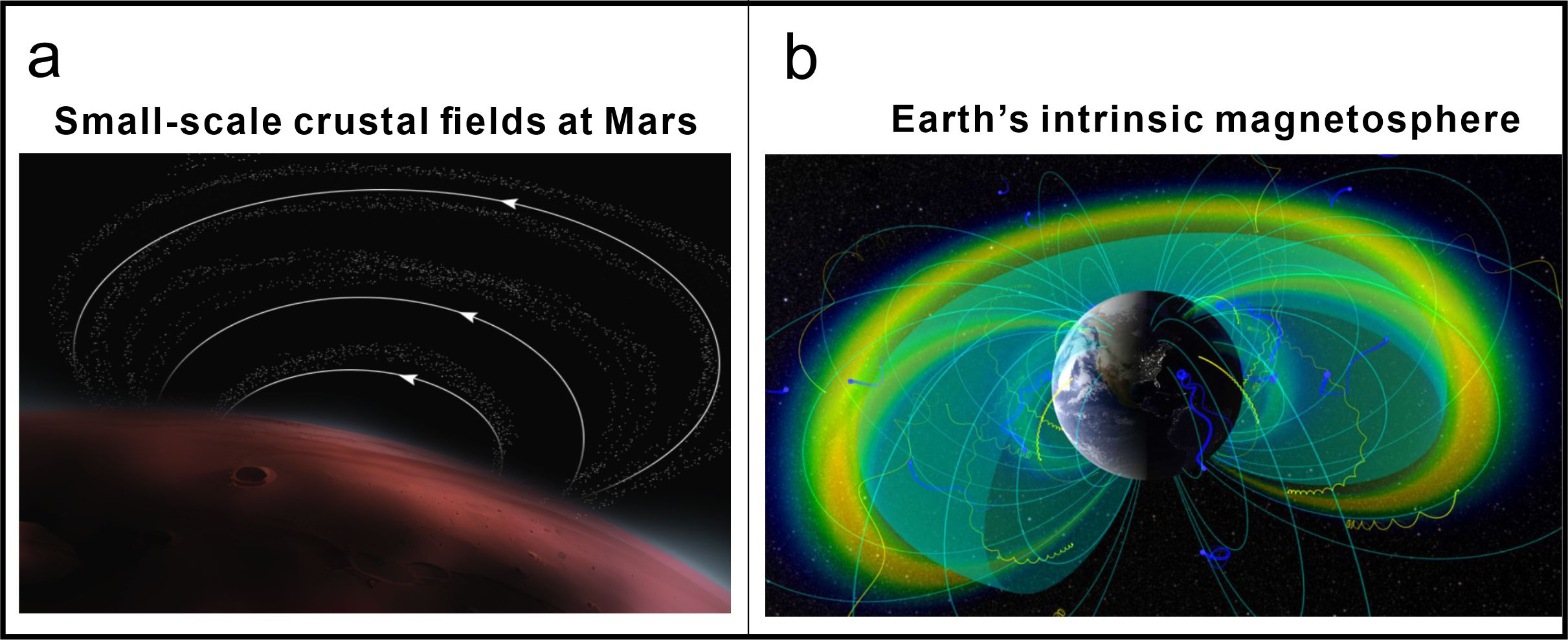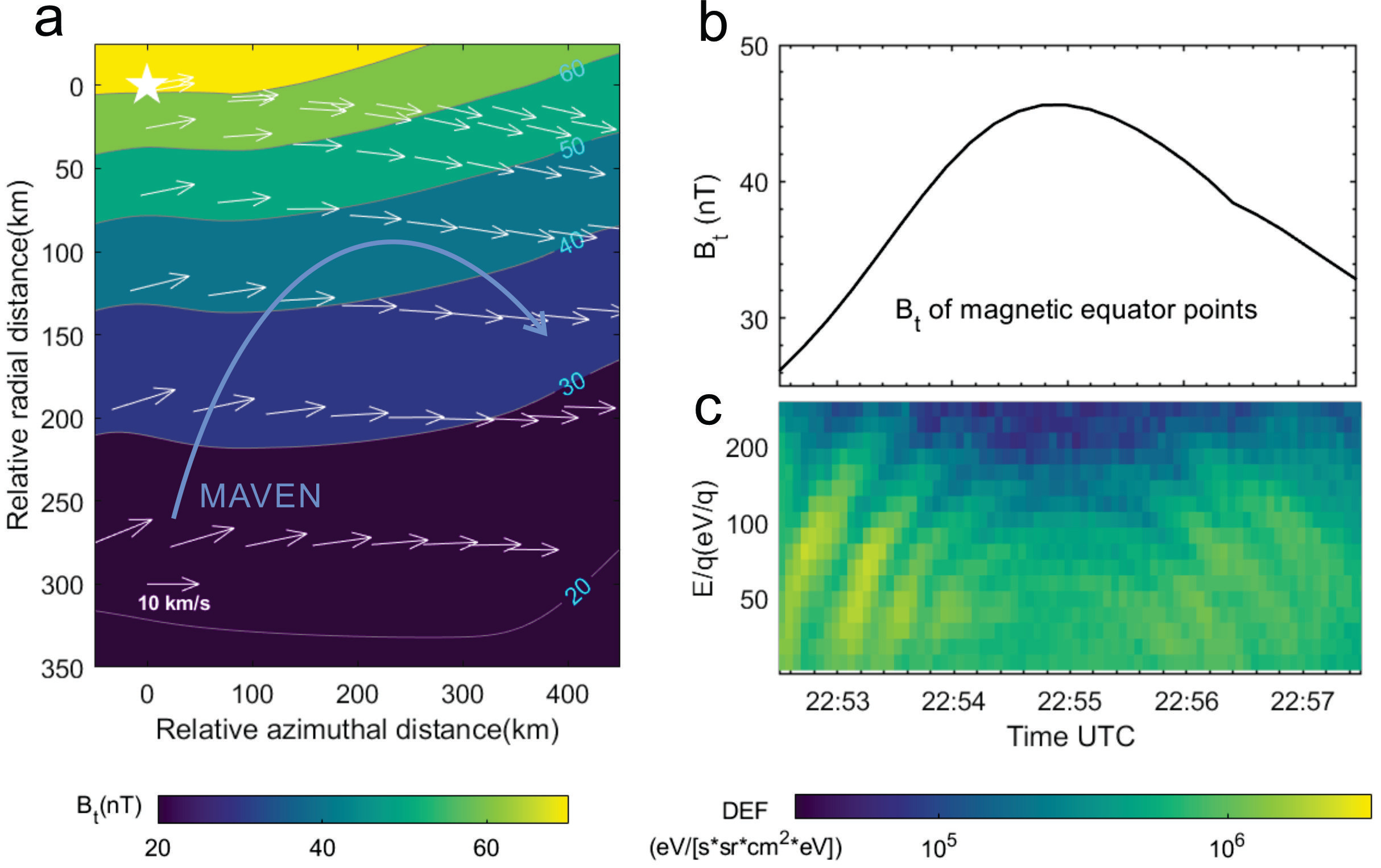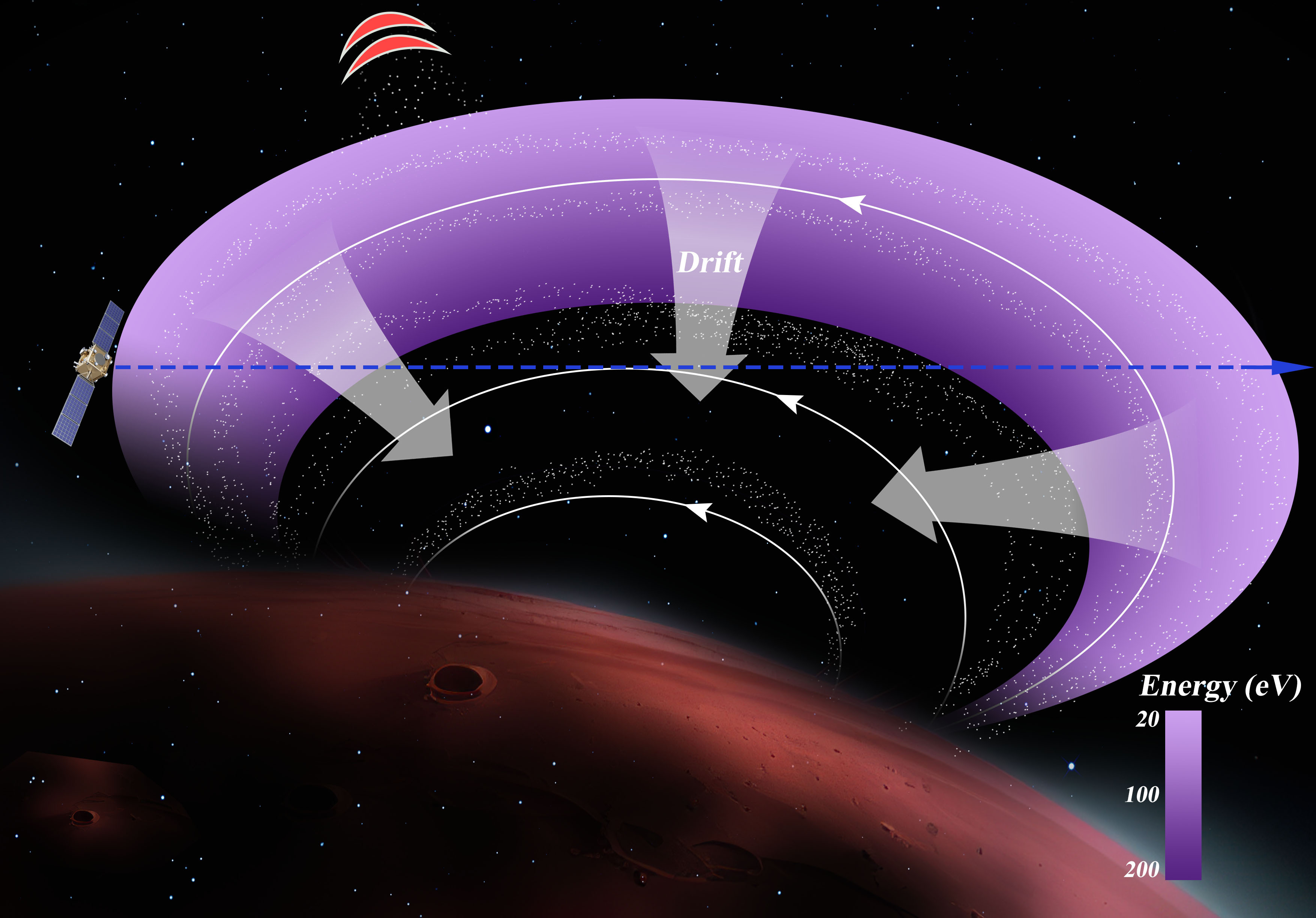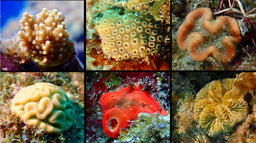Unveiling the Dynamics of Interaction Between Mars' Magnetic Field and the Solar Wind
Published in Astronomy
It's widely understood that the interplay between stellar winds and planetary magnetic fields is pivotal for the evolution of planetary atmospheres and their habitability. Within our solar system, Mars stands out: it lacks a global magnetic field but possesses small-scale crustal magnetic fields, which provide a unique natural laboratory for studying the impacts of small-scale crustal fields on atmospheric escape. Small-scale crustal fields are often referred to as “mini-magnetospheres” because they bear a resemblance in morphology to Earth's intrinsic magnetosphere, albeit on a reduced scale. Yet, the dynamics of charged particles, both ions and electrons, might differ between these crustal fields and the intrinsic magnetospheres. Earth's intrinsic magnetosphere traps these charged particles, which then accumulate around the planet, forming a dense ring current and radiation belt (see Figure 1). These phenomena pose risks by potentially damaging spacecraft electronics and presenting health hazards to astronauts. Three pertinent questions emerge:
- How do the crustal fields influence particle dynamics?
- Can these small-scale crustal fields also trap particles in a manner akin to the intrinsic magnetospheres?
- In what ways do the crustal fields impact the interaction between solar wind and a planet, and how might they influence atmospheric evolution?
Driven by these inquiries - and, to be honest, mainly due to curiosity, I set out to explore the ions behaviors within the small-scale Martian crustal fields based on the high-resolution measurements provided by the NASA’s Mars Atmosphere and Volatile EvolutioN (MAVEN) mission.

For decades, there has been no observational evidence of trapped ions at Mars. This absence has fostered the notion that, owing to Mars's weak magnetic field environment, ions are predominantly unmagnetized and will escape to space. However, in October, 2022, we found a distinctive and unique case where ions appeared to be magnetized and trapped by the crustal fields, a phenomenon highlighted by the spatial dispersion structures of the ions (refer to Figure 2). Intriguingly, this kind of signature has, until now, only been detected within intrinsic magnetospheres.
Initially, I was both surprised and elated, recognizing that this unique event could deepen our insight into Martian crustal fields. My supervisor and colleagues suggested that this finding is novel and could be published in a high-quality journal. However, to be honest, I was uncertain about how to delve deeper into the analysis and truly grasp its significance. In reality, I have shared and discussed this event with numerous researchers, spanning not just the Mars research domain but also those specializing in Earth’s magnetosphere. Our primary challenge was discerning how these signatures emerged from drift motion. Given the intricate nature of the crustal fields and our lack of data on electric fields, this was no simple task. As a workaround, we embarked on test particle simulations based solely on crustal field models, aiming to reveal the formation mechanism of these dispersion structures.

Nonetheless, with the guidance of several researchers well-versed in studying ion motions within intrinsic magnetospheres, we realized we couldn’t accurately reproduce the structures based on the model without accounting for electric fields. This left me somewhat disheartened, and I voiced concerns to my colleagues about the lack of a solid explanation. My colleagues were supportive and believed that our findings were valuable. We note that this unsuccessful experiment emphasizes the existence of electric fields within the crustal fields, an aspect that had been previously neglected. The infrequent appearance of this signature further suggests its formation is intrinsically tied to specific configurations of electric fields. This has greatly improved our understanding of Martian crustal fields.

We then set out to examine the spatial distribution of ions with varying energies, comparing it to patterns observed in Earth’s magnetosphere. We observed that as MAVEN approached the inner sections of the crustal fields, ion energy increased, while it decreased as the spacecraft moved towards the outer regions. This suggests that ions with higher energies are found in the inner parts, while those with lower energies are in the outer regions (refer to Figures 2 and 3). This spatial ion distribution mirrors patterns seen on Earth, implying the underlying mechanisms are likely the same.
The significance of this discovery is multi-fold. Firstly, it offers profound insights into the operation of Martian crustal fields. While we have had a more complete understanding of how the global intrinsic magnetospheres affect the solar wind interaction with planet, Mars’s case provides insights into a scenario where small-scale crustal magnetic fields play a dominant role. Second, going forward, by understanding the of Martian magnetic fields, we edge closer to unraveling the geologic history and atmospheric evolution of the red planet.
Follow the Topic
-
Nature Communications

An open access, multidisciplinary journal dedicated to publishing high-quality research in all areas of the biological, health, physical, chemical and Earth sciences.
Ask the Editor – Space Physics, Quantum Physics, Atomic, Molecular and Chemical Physics
Got a question for the editor about Space Physics, Quantum Physics, Atomic, Molecular and Chemical Physics? Ask it here!
Continue reading announcementRelated Collections
With Collections, you can get published faster and increase your visibility.
Clinical trials 2025
Publishing Model: Open Access
Deadline: Dec 31, 2025
Women's Health
Publishing Model: Hybrid
Deadline: Ongoing





Please sign in or register for FREE
If you are a registered user on Research Communities by Springer Nature, please sign in